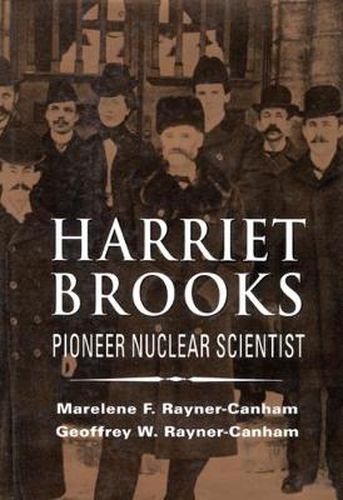Readings Newsletter
Become a Readings Member to make your shopping experience even easier.
Sign in or sign up for free!
You’re not far away from qualifying for FREE standard shipping within Australia
You’ve qualified for FREE standard shipping within Australia
The cart is loading…






Harriet Brooks (1876-1933) was one of the first researchers in the field of radioactivity. Ernest Rutherford called her the best woman scientist in the field next to Marie Curie. She worked with Rutherford, J.J. Thompson, and Curie, and her achievements include identifying emanation (radon) and discovering the recoil of the radioactive atom. Yet, in spite of her contributions, this is the first biography of Brooks’ life and work. After completing a master’s degree at McGill University under Rutherford’s tutelage, Brooks continued her postgraduate work at Bryn Mawr College and Cambridge University, eventually returning to McGill to work again with Rutherford. In 1904 she left Canada to work at Barnard College in New York City, and then with Curie in Paris. Brooks had a significant career as a nuclear scientist, but her success was hampered by the fact that she was a woman. In Harriet Brooks , Marelene and Geoffrey Rayner-Canham pay close attention to Brooks’ struggle to overcome conventions, looking at the problems facing Brooks, and women like her, who pursued a college education and an academic career. She eventually married and left research. Her premature death at age 56 was probably related to her work with radiation.
$9.00 standard shipping within Australia
FREE standard shipping within Australia for orders over $100.00
Express & International shipping calculated at checkout
Harriet Brooks (1876-1933) was one of the first researchers in the field of radioactivity. Ernest Rutherford called her the best woman scientist in the field next to Marie Curie. She worked with Rutherford, J.J. Thompson, and Curie, and her achievements include identifying emanation (radon) and discovering the recoil of the radioactive atom. Yet, in spite of her contributions, this is the first biography of Brooks’ life and work. After completing a master’s degree at McGill University under Rutherford’s tutelage, Brooks continued her postgraduate work at Bryn Mawr College and Cambridge University, eventually returning to McGill to work again with Rutherford. In 1904 she left Canada to work at Barnard College in New York City, and then with Curie in Paris. Brooks had a significant career as a nuclear scientist, but her success was hampered by the fact that she was a woman. In Harriet Brooks , Marelene and Geoffrey Rayner-Canham pay close attention to Brooks’ struggle to overcome conventions, looking at the problems facing Brooks, and women like her, who pursued a college education and an academic career. She eventually married and left research. Her premature death at age 56 was probably related to her work with radiation.